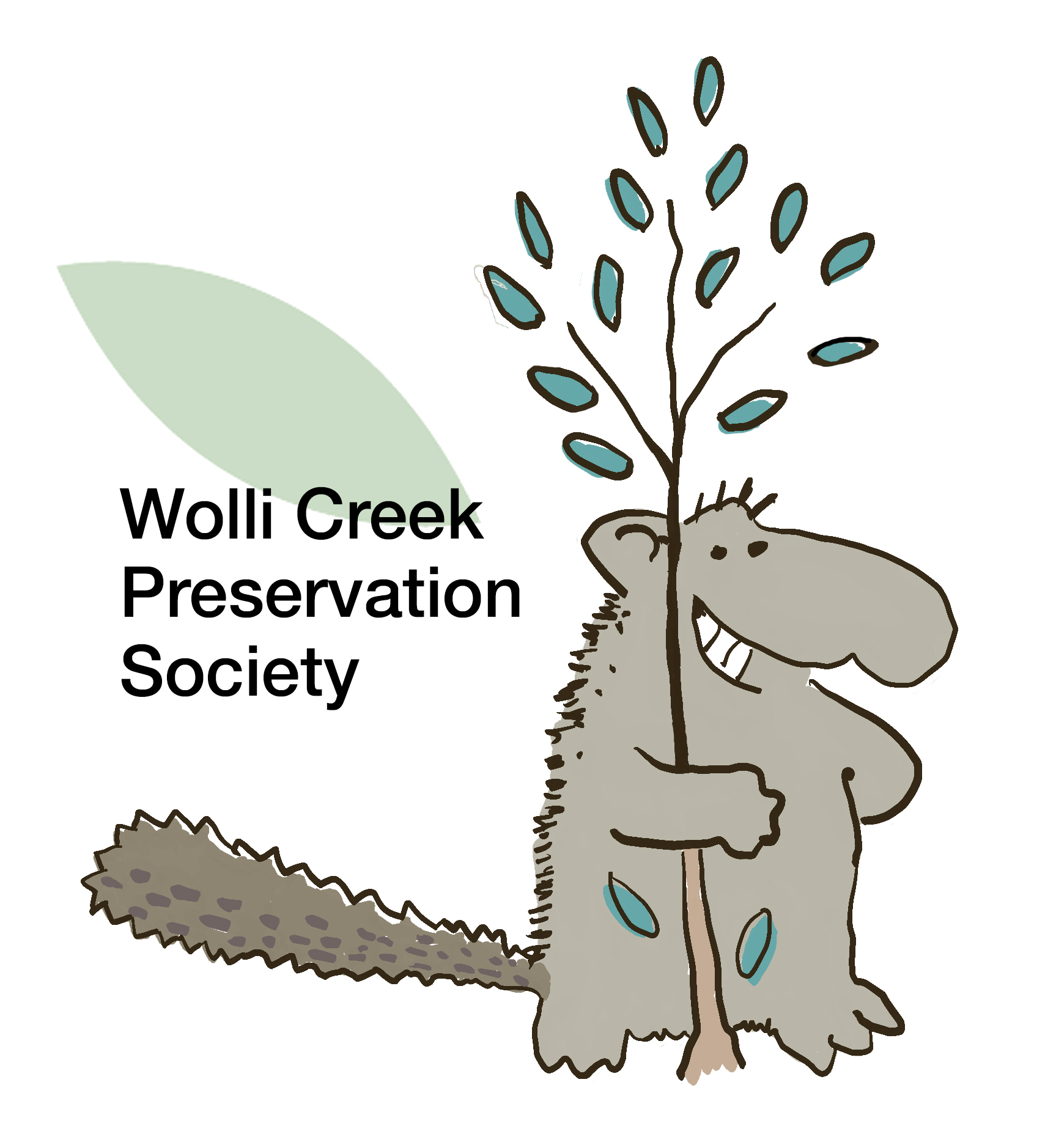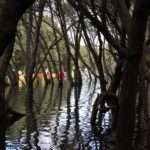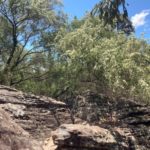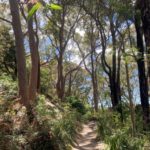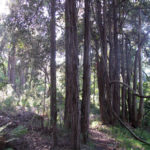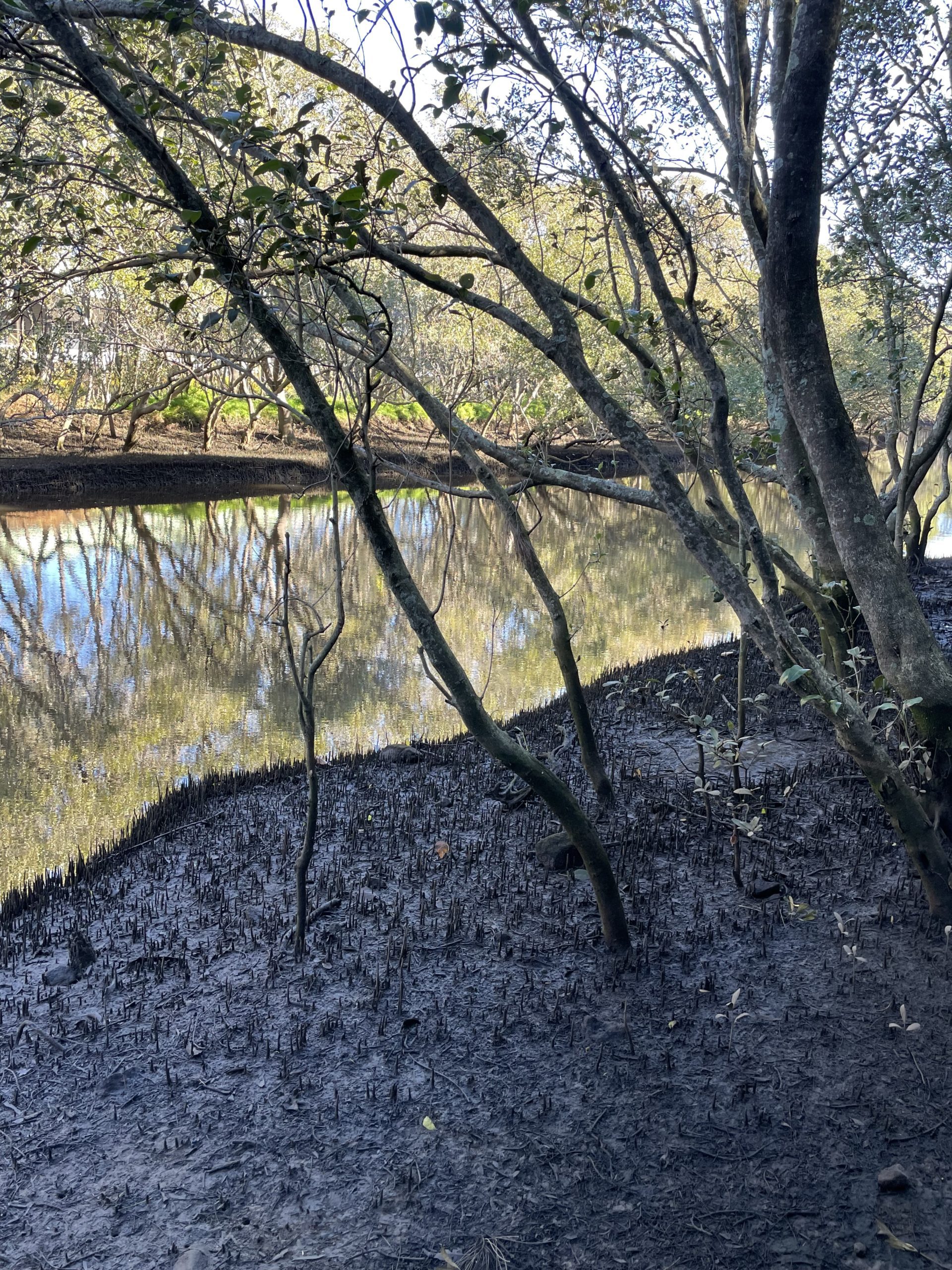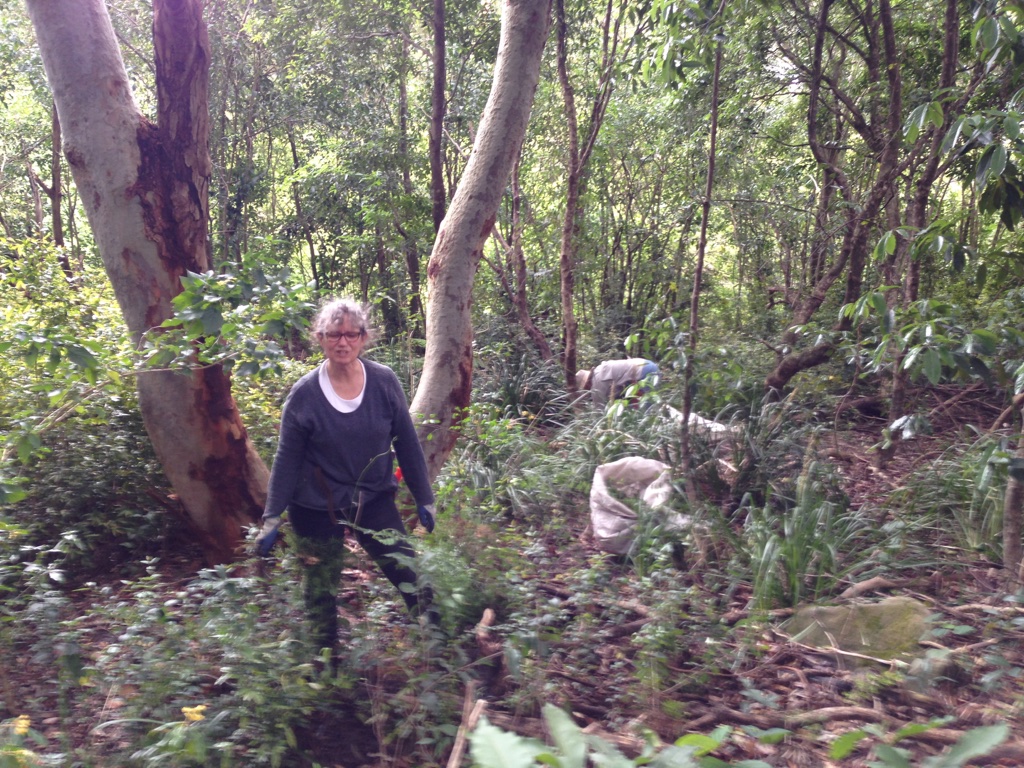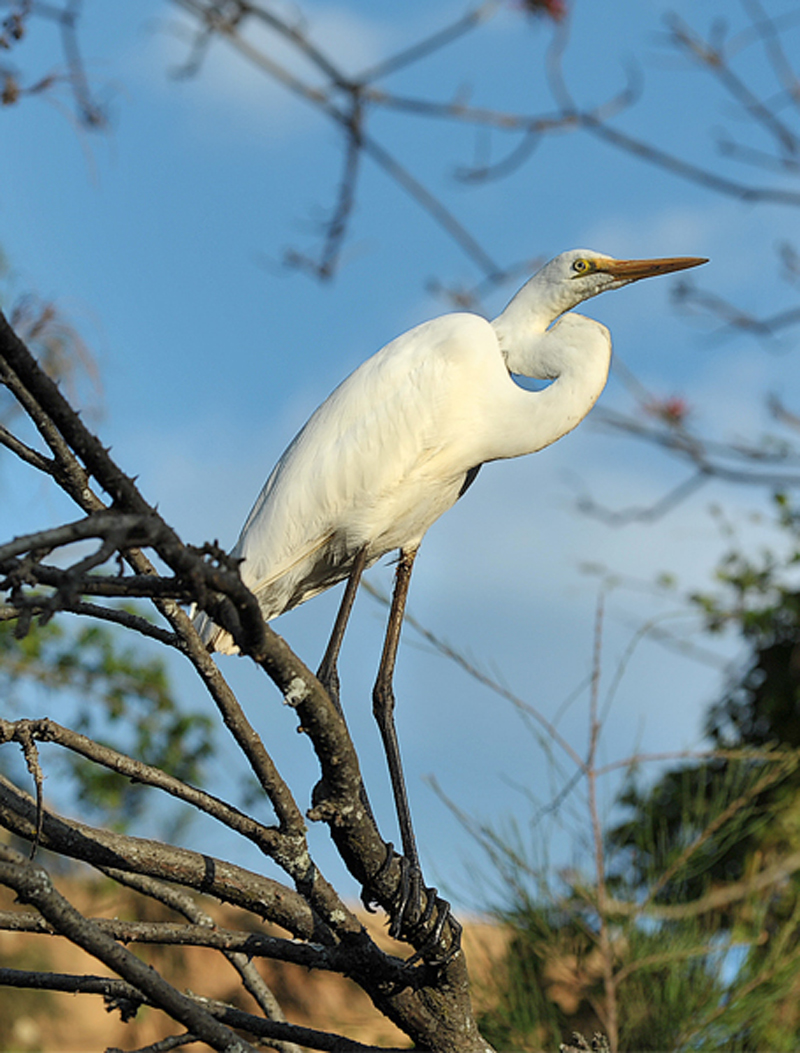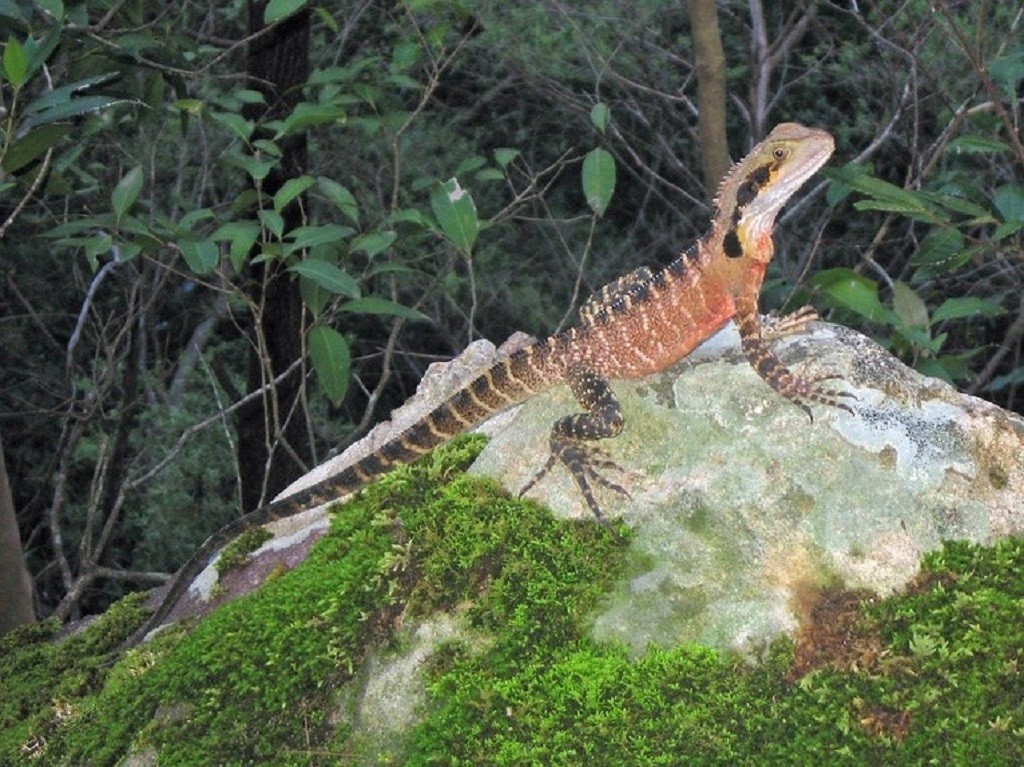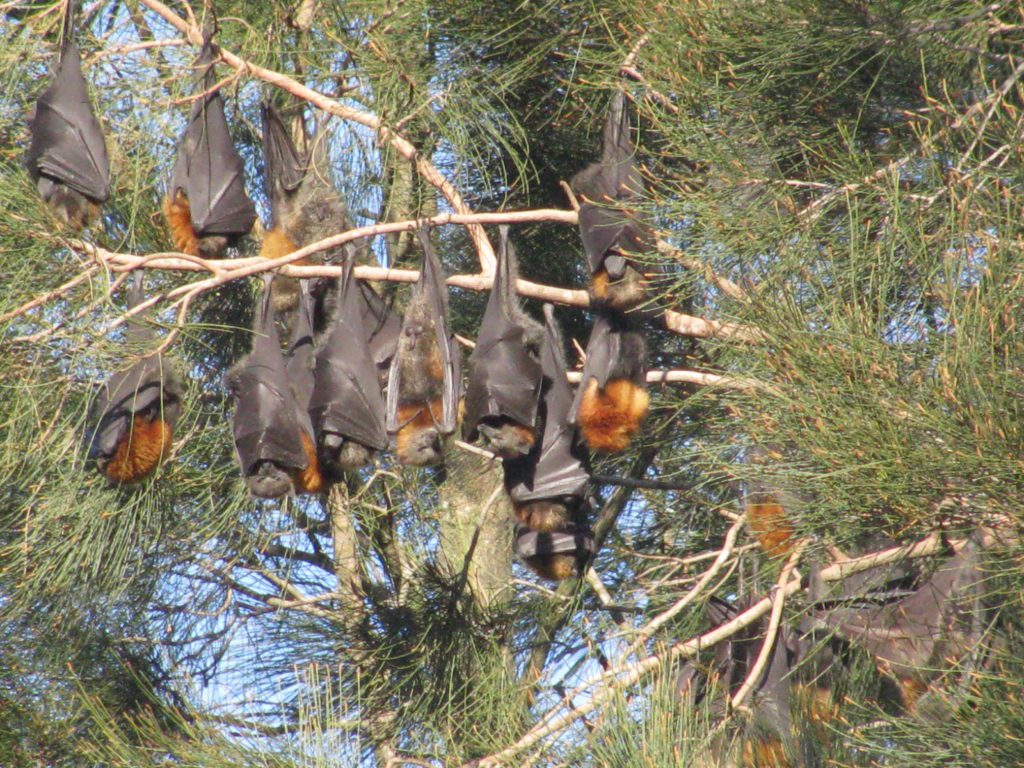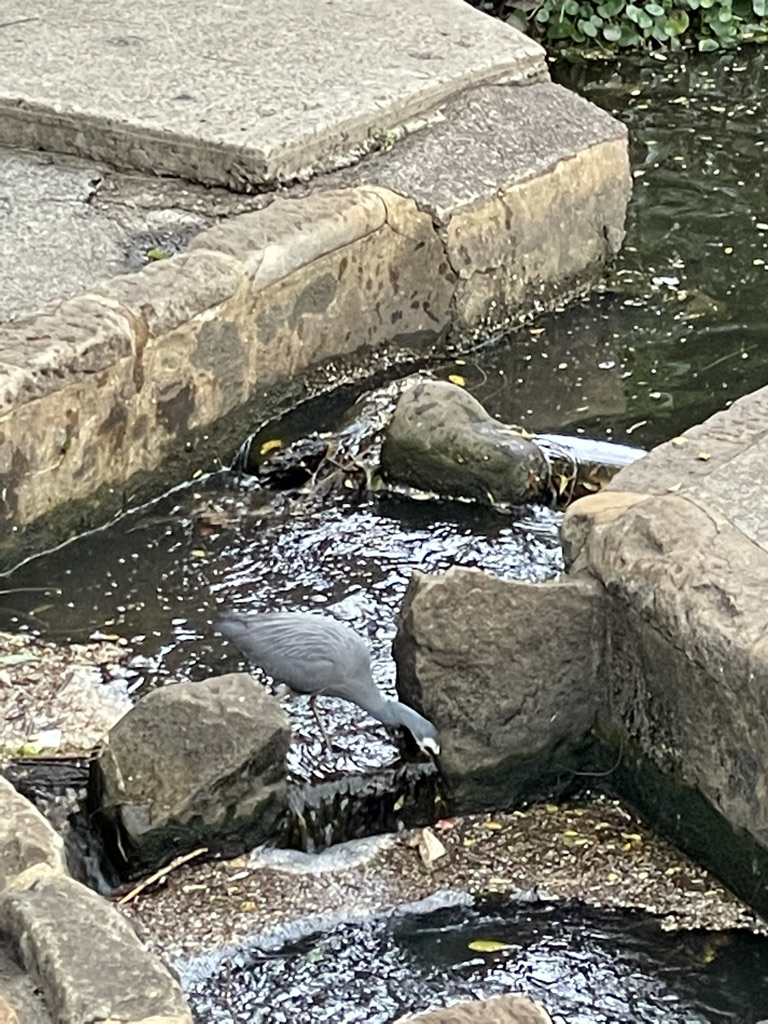Range of habitats
OVERVIEW
A diverse and distinctive range of habitats and native plant communities can be found in the Wolli Creek Regional Park and the wider Valley. Around 350 species of native plant species have been recorded.

PLANTS
As you walk along the TVT track through the Valley, you can see changes in the type of landscape and plants you encounter..
At the western (Bexley North) end of the Valley the presence of deeper, shale- derived soil (clay) has influenced the nature of the vegetation. Moist forest species can be found. These include the Turpentine (Syncarpia glomulifera) trees and vine thickets dotted along the track, and even rainforest species lower down the slope and close to the creek, such as Coachwood (Ceratopetalum apetalum), Lilly Pillys (eg. Acmena smithii) and Watergum (Tristaniopsis laurina). Elsewhere here, open woodland, dominated by Eucalyptus and Angophora trees is encountered.

As you walk further east, the landscape and vegetation shows noticeable changes, reflecting the increasing presence of Hawkesbury sandstone, with impressive cliffs appearing between Girrahween Park and Turrella Reserve. Sandy, shallower soil gives rise to heathland on the more exposed, upper slopes, as well as on rocky outcrops such as Nannygoat Hill – Kunzea ambigua is common, and dominant in this heathland. Smooth, pink-barked Sydney Red Gum (Angophora costata) as well as tall Eucalyptus trees (eg. Sydney Peppermints, and Blackbutts) grow in woodland, on lower, often more sheltered slopes, and where the sandy soil is deeper (see Trees of Wolli pdf 1.2MB). Understory plants include Banksias, Wattles, a range of shrub species, climbers, ferns, orchids, and occasional native grasses and other herbaceous ground cover plants.
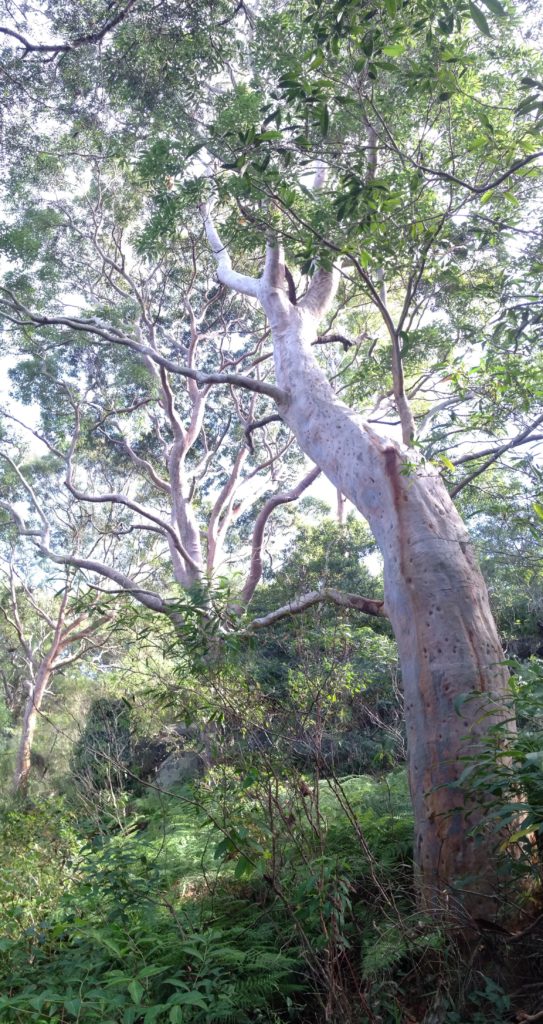
Closer to Turrella Reserve, as the creek valley widens to a more fertile floodplain, River-Flat Forest species such as Swamp and Southern Mahogany (Eucalyptus botryoides and robusta) occur, along with Swamp Oaks (Casuarina glauca) and Paperbarks (Melaleuca species). This vegetation community has been most impacted historically as flatter land and close proximity to the creek saw wool washing, tanneries, and other industries established there, as well as later, extensive areas of market gardens (the latter lasting up until the 1950s).
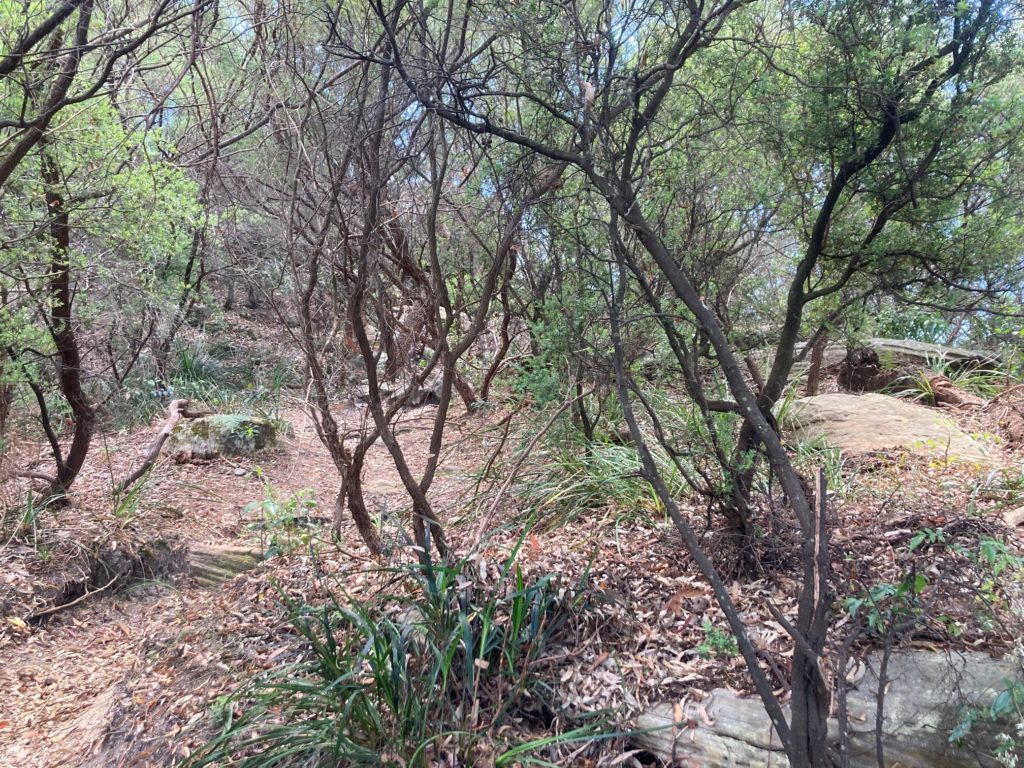
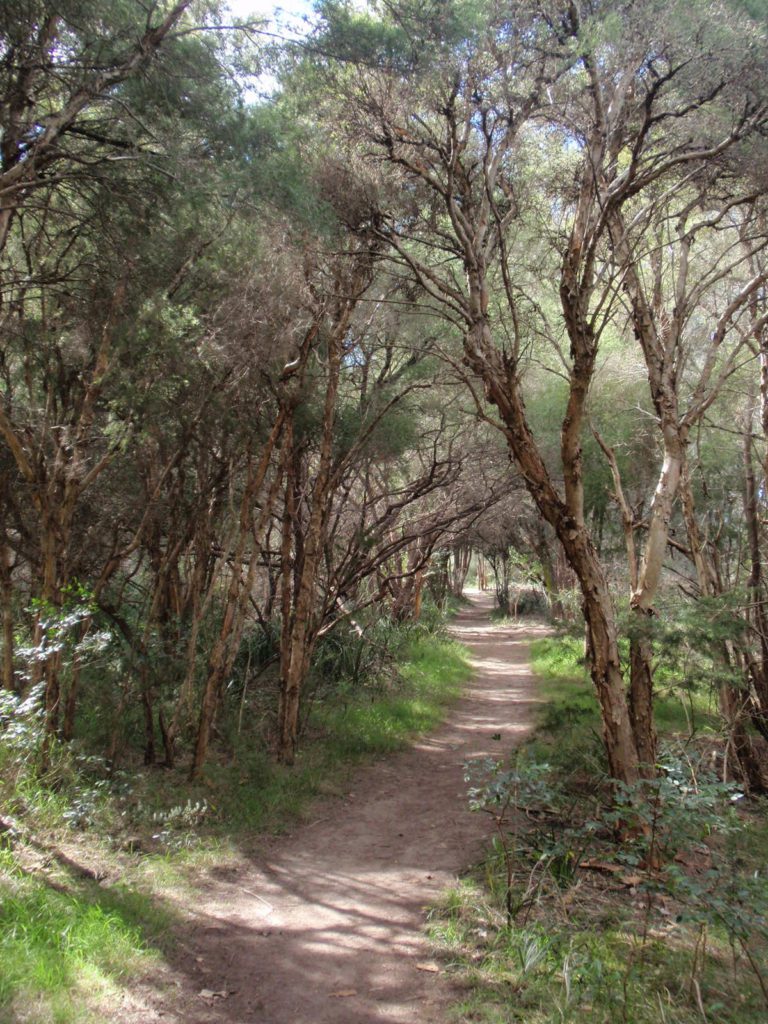
The tidal and brackish lower reaches of Wolli Creek are dominated by mangroves which line the creekbanks, and saltmarsh which occurs behind, landward of the mangroves. Reeds and rushes are also found in the swampy, wet areas.
The range of habitats and native plant communities are in varying condition and stages of recovery from the impacts of past occupation and land use. Some vegetation types in some locations can, and have bounced back well from previous clearing and weed invasion, among other impacts. There are some wonderful wildflowers to see at different times of the year and volunteer bushcarers are working to restore/regenerate areas of the Valley. Long term, this work removing and controlling weed species will tip the balance well in favour of native plants.
ANIMALS
The landforms and associated vegetation of the Valley, as well as the creek itself provide a diverse range of habitats for a great variety of fauna, particularly birds and reptiles. Bird records date back to the 1940s, with 100 species being sighted each year in recent times. Previously unrecorded birds are added each year through monthly surveys conducted by volunteers. The bushland is a valuable resource for birdlife, providing food, shelter and nesting sites. It is a niche for a range of resident birds, and an important resting or ‘stop off’ point for migratory species. For migratory species moving between higher country west of Sydney and the coast, it provides a significant west-east bushland corridor. For migrants moving north-south across Sydney’s urban south, it is an important ‘stepping stone’.
The valley’s many exposed sandstone outcrops, overhangs, crevices and ledges provide good habitat opportunities for reptile species, of which at least 17 species have been identified. The largest of these, the Red-bellied Black Snake, is sometimes seen from tracks, and close to the creek. Also closer to the creek, you may be lucky enough to see an Eastern Water Dragon, or a Long-Necked Turtle. Five frog species and ten fish species have also been recorded.
Native mammal species, as with many urban bushland areas. are much fewer in number. Both the Common Brushtail and Ringtail Possum are present, tending to inhabit the edges of the bush, near houses and gardens.
Insectivorous Micro- bats have also been recorded, and there is a Grey-headed Flying Fox camp of National Importance. The Flying-fox camp was established in mid 2007, and its population, numbering in the thousands, is monitored and reported on by volunteers via monthly fly-out counts. There is an apparent absence of other mammal species, such as the Bush Rat, the Swamp Rat, the Southern Bandicoot and the Brown Antechinus, that have managed to survive in, or recolonise other Sydney bushland areas, and sometimes backyards. WCPS would welcome any research and field studies investigating the presence of these sorts of native mammals. Similarly we would welcome more research into the reptiles, frogs and fish in the Valley.
Another area where more information is desired relates to the insect life of the Valley. Insects are sometimes referred to as ‘the other 99%’. A few ‘snap shot’ surveys have been carried out, where 105 species have been identified. However there is also much more to be known about this less seen aspect of life in the Valley.
As with plant (weed) species, there are also pest species of animals, on land and in the creek.
For more information about the fauna of the Valley, including details about species recorded (and common and scientific names) – see Fauna of the Wolli Valley in Inner south-west Sydney in The Natural History of Sydney (D. Lunney, P. Hutchings and D. Hochuli (eds), Royal Zoological Society of NSW, 2010).
For general information about native plants that are useful (provide habitat and food resources) for a range of native animals, see Wildlife Habitat Plants (pdf). And for more detailed information about native plants that are indigenous or locally native to the Wolli Creek Valley, and their role in relation to a range of native animal species, see our publication Wildlife Habitat Plants of the Wolli Valley (2004)
